This week’s post about Mount Holly Springs in Cumberland County is the third in our series about the Tri-County Survey for PA SHPO’s Disaster Planning for Historic Properties Initiative. In previous posts, we wrote about Lykens, Dauphin County and Blain, Perry County.
Nestled in the foothills of the South Mountain range separating Cumberland and Adams counties, Mount Holly Springs serves as a regional employment center as it remains connected to its historical industry of paper-making and the water source (Mountain Creek) that powered local industry and recreation during the nineteenth and twentieth centuries.
Industrial Beginnings (ca. 1785-1873)
The area comprising present-day Mount Holly Springs was first settled by Europeans following the French and Indian War. The early settlers engaged in agriculture and various small-scale industries including lumbering and iron production.
The iron producers owned hundreds of timber or wooded acres on the South Mountain, which they used for the production of charcoal for their furnaces. Today, a few small stone dwellings from this era remain standing along S.R. 34 and S.R. 94 in the southern reaches of the borough.
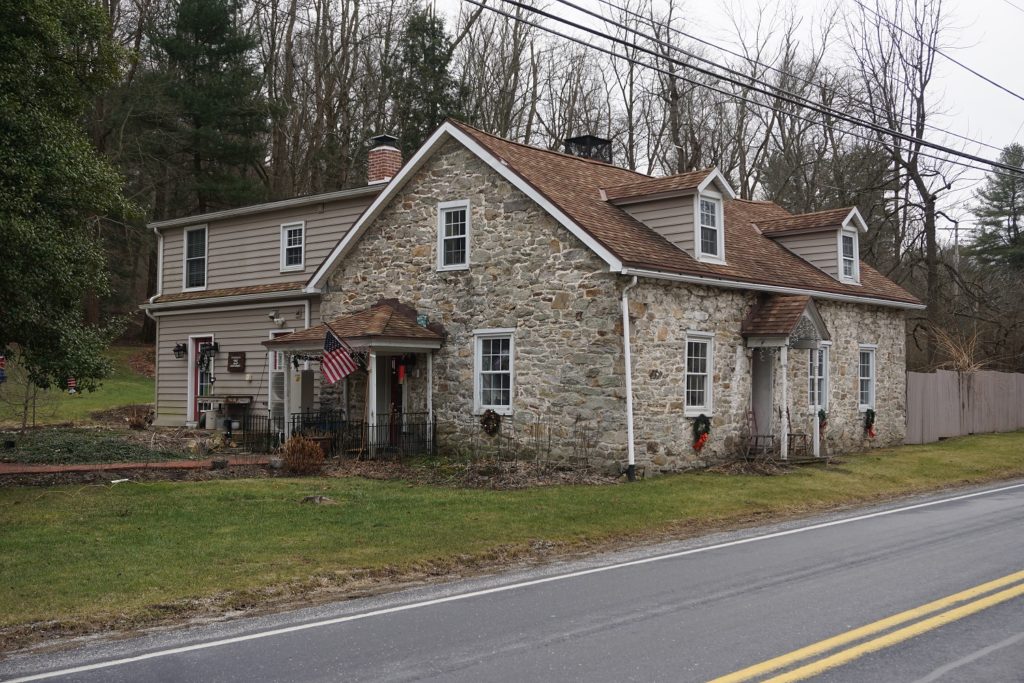
In addition to the iron industry, the paper industry began in Mount Holly Springs in the early nineteenth century.
The first mill was constructed along Mountain Creek by a firm named Barbour, McClure and Knox in 1812. As was common in the paper-making industry, the mill owners purchased used rags and brought them to their factory where the water of the creek supplied both the motive power for their machines and clean water needed to produce high-quality paper. Although originally sites of handwork, the mills were later converted to using Fourdrinier machines, which were introduced to the United States in ca. 1830.
The village clearly provided a hospitable location for the industry because, by 1858, there were a total of four paper mills lining Mountain Creek. The 1858 Atlas of Cumberland County, prepared by H.F. Bridgens, shows the mills, and the various names given to the industrial enclaves including Mount Holly and Papertown.
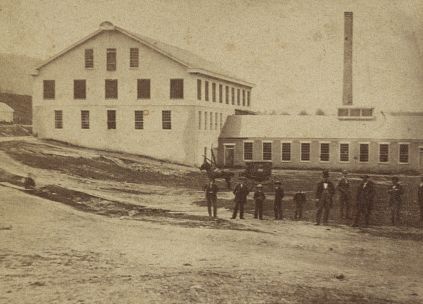
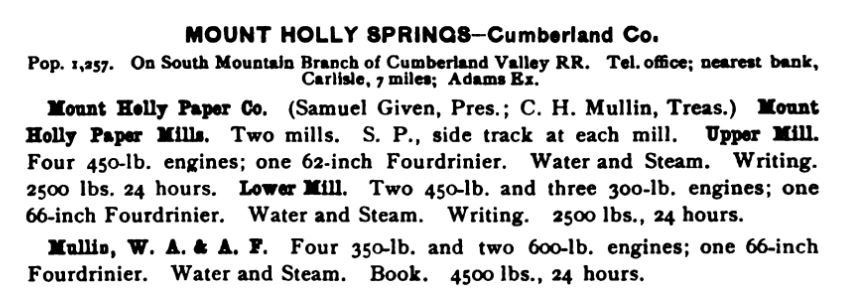
Mount Holly Springs flourished during the mid- to late-nineteenth century and the population steadily increased. Among those drawn to the town were a number of African Americans moving away from the south in search of new opportunities after the Civil War.
These residents settled primarily on the eastern edge of the town and formed a community that included Mount Tabor Church, a small wood-frame building that is owned by Mount Holly Springs Borough. Efforts to preserve this historic building are ongoing and you can follow them here at https://www.mttaborpreservation.com/.
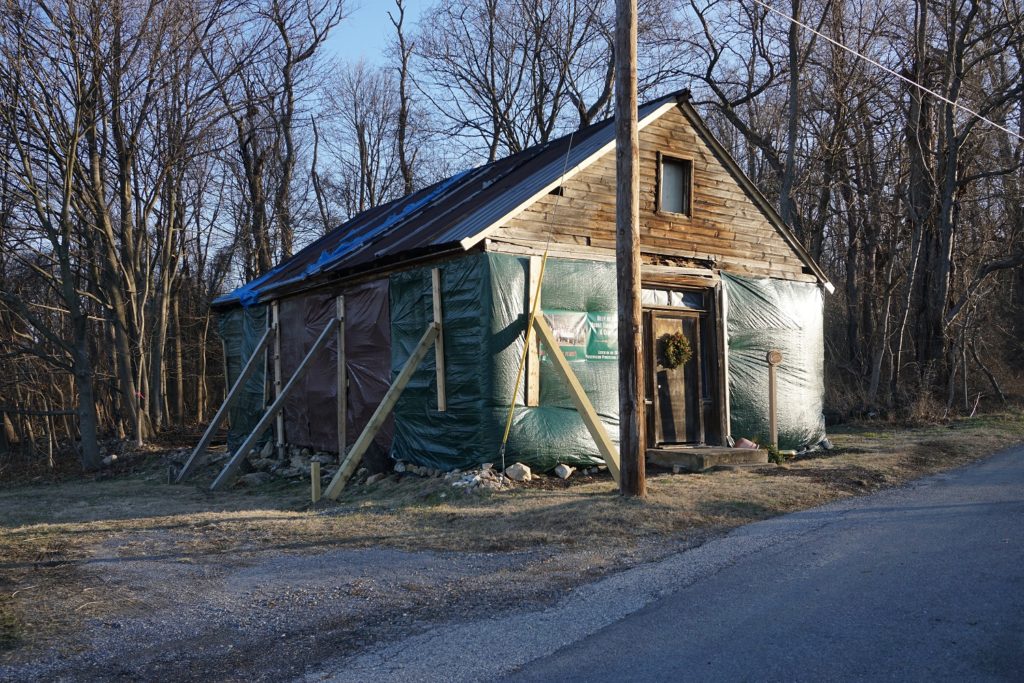
Industry and Recreation (1873-1930)
Mount Holly Springs was incorporated as a borough in 1873. The town continued to grow in large part due to the paper-making industry, which evolved from making general writing paper to producing book stock, and eventually to safety checks (checks that were more difficult to counterfeit) in the early twentieth century.
The strength of the paper industry led to successful ancillary industries like the Mount Holly Stationery & Printing Company, located on East Pine Street.
However, not all business in Mount Holly Springs was tied to industry. Due to the borough’s location at the foothills of the South Mountain, it was often 5-10 degrees cooler than in neighboring industrial centers like Carlisle and Harrisburg.
To take advantage of this, a recreational park was developed along Mountain Creek. Mount Holly Park opened in 1901, and was made accessible to surrounding communities by what became known as the Holly Trolley, which ran from Carlisle to Mount Holly Park. The park contained various activities including boating, picnicking, and hiking trails as well as dance halls, a baseball field, a bowling alley, and a roller coaster.
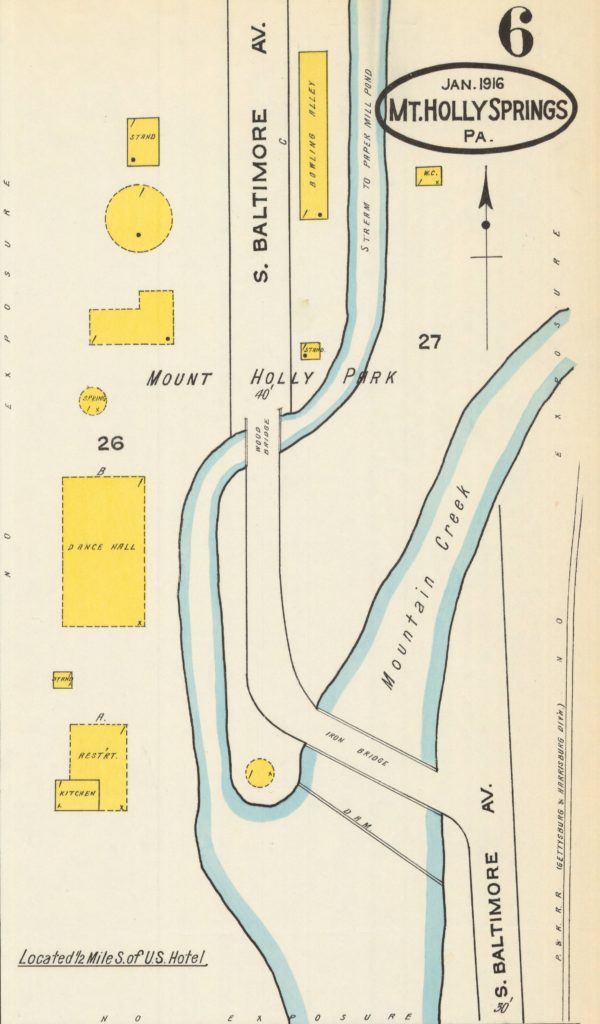
The park grew in popularity through the early 1900s, with a maximum ridership on the trolley line of 212,605 passengers in 1906. The park and trolley line remained in business until 1918, when both went into decline. The location’s popularity began to decline after the closure of the roller coaster, and was further diminished by flooding that damaged the dam supporting the park’s 30-acre lake.
The Great Depression and the rise of personal automobiles finally led to the closure of both the park and trolley line in 1930. There do not appear to be any remaining visible remnants of the park in Mount Holly Springs.
Mount Holly Springs Today (1930 – Present)
In the twentieth century, Mount Holly Springs was home to a diversity of shops and businesses, including: clothing manufacturers, a sand quarry, various dry goods and grocery stories, several bakeries, and a theater. Throughout the decades, with changes in ownership and modifications to the mills, the paper industry has continued to thrive in Mount Holly Springs.
Today, the borough remains a center of industrial production in Cumberland County. Two paper mills remain in operation, along with a nearby glass factory and microchip production facility. Mountain Creek, Mount Holly Springs’ lifeblood since the eighteenth century, continues to flow down from the mountains bolstered by the borough’s eponymous springs, passing the paper mills and former park before skirting residences and businesses on its way to the Yellow Breeches Creek.
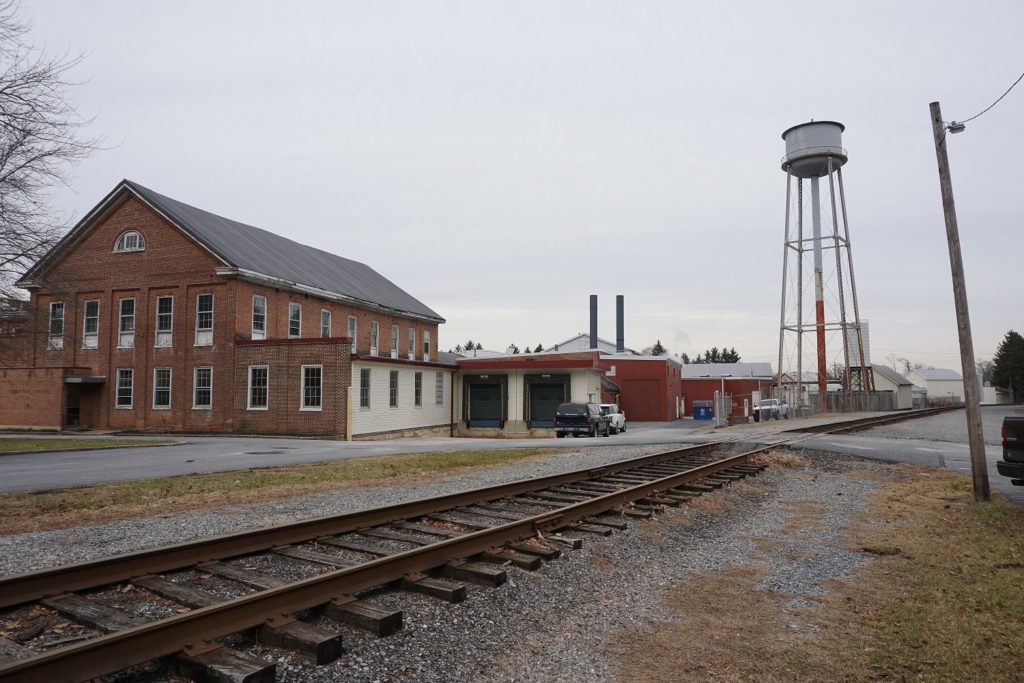
If you are interested in learning more about about Mount Holly Springs, check out these resource:
- Carlisle and Mount Holly Springs Street Railway Company: The Trolley to Holly by Randy Watts
- The Paper Mills of Mount Holly Springs, Pennsylvania by Randy Watts
- Library and Archives of the Cumberland County Historical Society (https://www.historicalsociety.com/research/research/).
This week’s guest author is Ben Harvey. Mr. Harvey is the Principal Investigator for Architectural History in the Pennsylvania Regional Office. He has ten years of experience in architectural history, history, and historic preservation in the Mid-Atlantic and southern United States. Mr. Harvey has employment experience with state governments as well as the private sector. He is responsible for Section 106 above ground compliance projects including historic resource survey forms, National Register eligibility evaluations, effects determinations, mitigation of adverse effects, and HABS recordation. He also completes Section 4(f) documentation for the Pennsylvania region. Mr. Harvey has completed large-scale survey projects both in urban communities and across rural areas as part of National Register of Historic Places listing and for environmental review projects.
The place is so historical. Great!
Thank you for your contributions to this page. I lived in Mt. Holly all my life until a friend got sick eight years ago and I moved to take care of her. My Holly was the era of PETER J SCHWEITZER’s paper mill, where my grandfather often took me on his days off. I remember the steam and heat almost knocking me over as we walked into the mill. Of course, I wanted to follow in Pop’s footsteps and work there, but they built PPG in ’72 and PPG paid more. My Grandmother worked in what was, in my youth, Wagners Drug Store at the old location next to the old Post office. She worked there most of her life, as Doc Snyder, a relative (great, great uncle or something) opened the drug store in 1902. My grandmother had tons of memorabilia which, unknown to the family, she PAID a junkman to haul away when she sold her house. Oh, Lord. I used to talk to Pop for hours about Holly of the ’20s and ’30s and my Dad and Mom (now 87) take it into my time of the ’50s on. We lost a wealth of history when my grandparent’s generation passed away, and my parent are some of the remaining few of their generation. I’d like to put my memories on paper, but my recollections are so scattered, and without specific dates that it would be impossible. That is why I’m glad we have local historians who keep the history of Mt. Holly alive.
The Mt. Tabor AME Zion Church and Cemetery have been listed on the National Registry of Historic Places as of 2021.
When was the Molly Pitcher Canning Co. in operation. I found a vintage wooden crate from this company and was curious about it’s history. I’ve Google searched it and have come up with nothing.